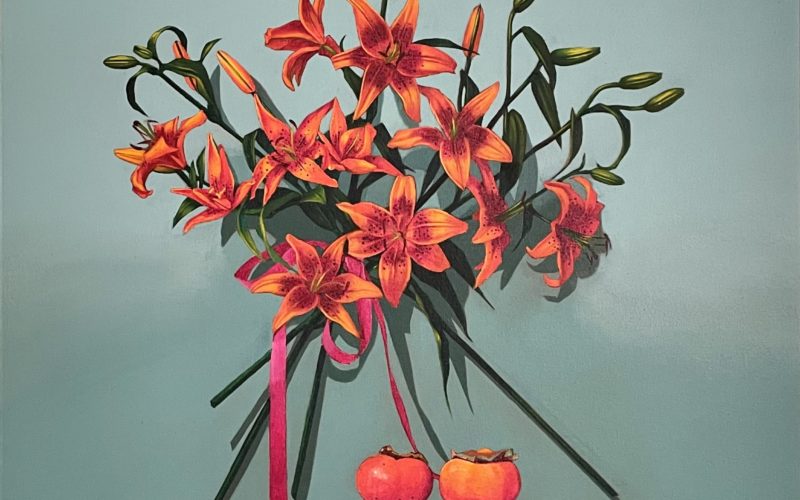BECCA MARTIN-BROWN
bmartin@nwaonline.com
As far as artist John Rankine is concerned, the rest of Northwest Arkansas is just playing catch up. Eureka Springs was the first community in the region to showcase visual artists, and he can prove it with his most recent curatorial effort, “Gone But Not Forgotten: Eureka Icons,” at Brews.
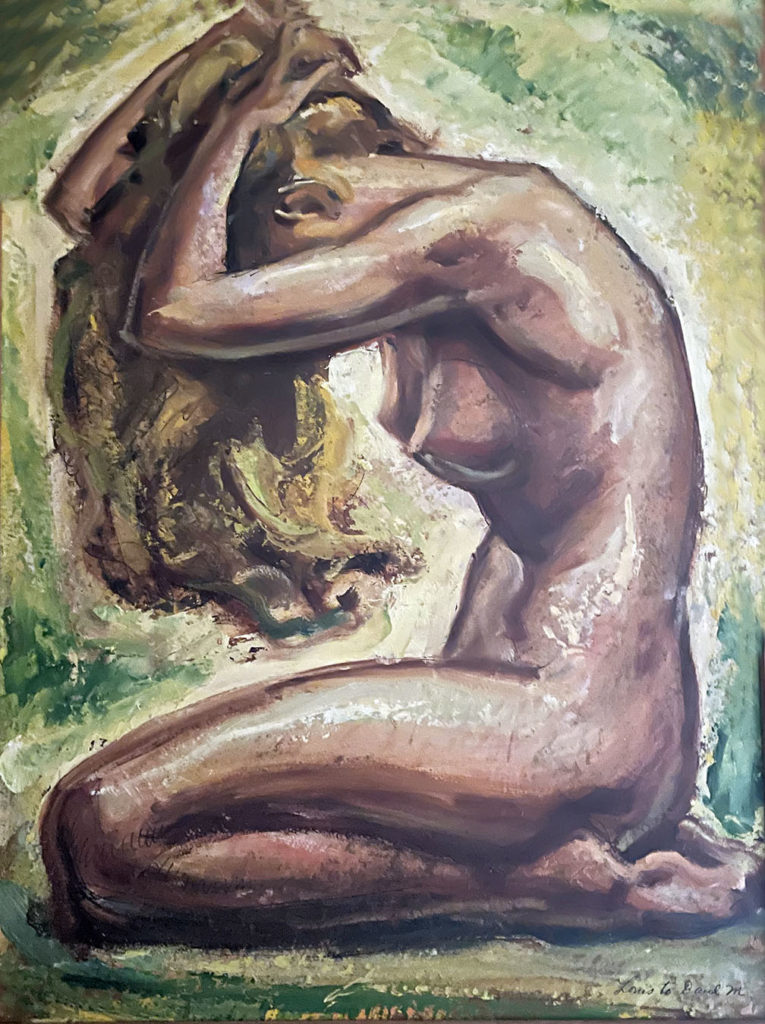
“One of the earliest pieces in the exhibition is a 1917 Ozark scene painted by Fred Swedlun,” says Rankine, who curates all the exhibitions at Brews. “We used to be the only game in town, but it’s great to see Fayetteville, Bentonville and Springdale stepping up their art cred.”
Rankine says he was at a friend’s house, admiring the collection of art on their walls, “and thought how lucky I was to see this — that the majority of people in this town would probably never get to see. This exhibition would not have been made possible without the generosity of local art patrons and collectors who loaned their works for the show.
“I think everyone I asked knew the importance of what I was trying to do, and that was to pay tribute to these men and women who had a major influence on the art scene in Eureka.”
The artists included in “Gone But Not Forgotten” are Mary Sims, Elsa Freund, Miriam McKinnie, Ken Addington, Glenn Gant, Gary Eagan, Louis Freund, Julie Traxler, Max Elbo, Tommy Thomas and Jack Miller, along with Glenn Swedlun and his father, Fred Swedlun, who worked for many years as “Ernest Fredericks, an inversion of his given names, to avoid the prejudice towards Swedes when he was young.”
Rankine, who moved to Eureka Springs from Key West, Fla., in 1996, feels fortunate to have known many of these artists, whom he considers legendary, himself.
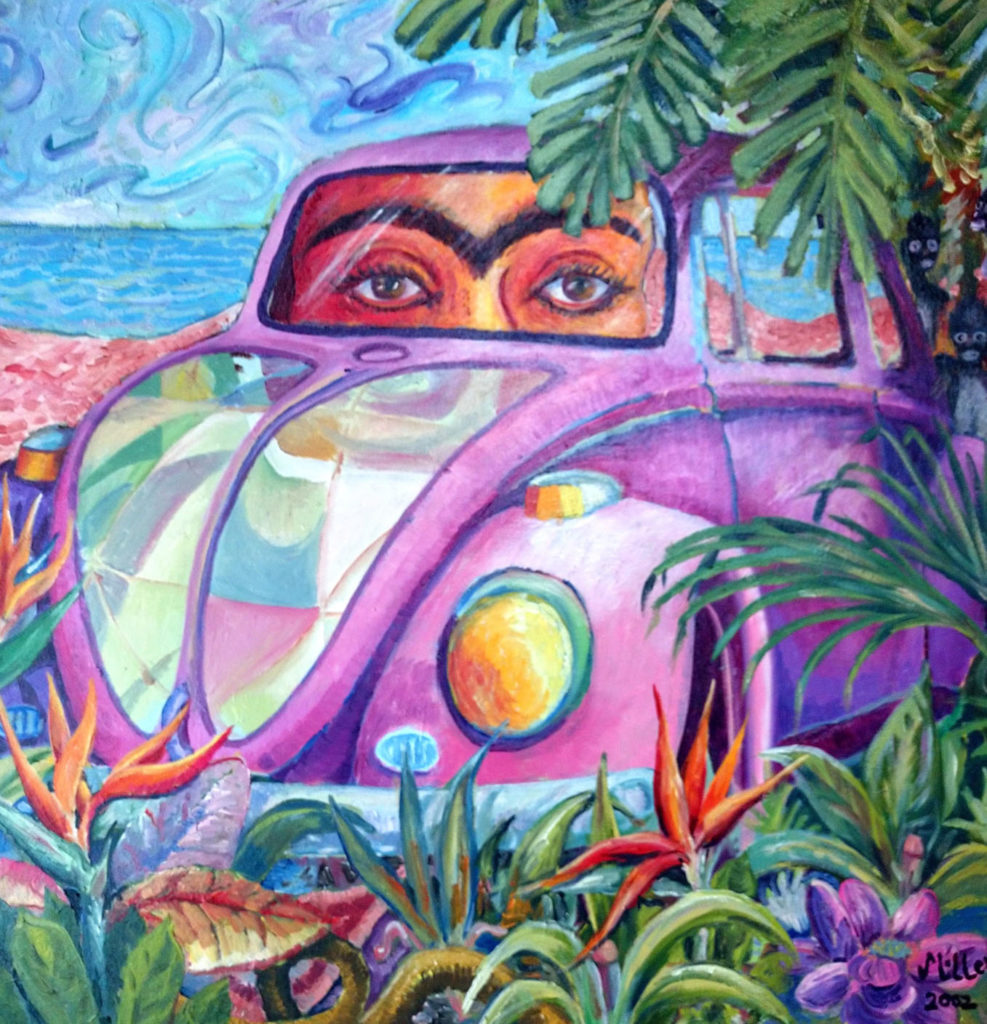
“I remember meeting Louis and Elsie Freund for the first time. They were like Eureka Springs royalty,” he says. “They were both so charming and interesting and obviously so talented. I was especially drawn to Elsie’s work. Her exquisite jewelry and watercolors were so feminine, especially compared to her husband’s very heavy and masculine [Works Progress Administration] style murals and paintings.
“I was lucky to be invited to visit Mary Sims in her studio, something I found out later was a very rare thing to be asked,” Rankine goes on. “Mary was as quirky, charming and delightful as one of her paintings. I’m very excited that a 6-foot-by-4-foot show-stopping acrylic painting is included in the exhibition.
“I had the privilege of photographing Max Elbo for various projects. Max was the very best graphic artist. It’s hard to believe that the work was all done in pen and ink years before the invention of Photoshop. We have on loan several originals that are absolutely stunning.
“And Gary Eagan was a dear friend and an amazing ceramic artist. He and his partner Steve Beacham were some of the first people I met in Eureka.
“It’s important to not forget our rich cultural history,” Rankine says. “These 13 artists are just the tip of the iceberg. I am already working on ‘Gone But Not Forgotten: Part 2’ for the new year to include people like Reed and Stella Larson, Shuggie Tucker, Lynn Williams, James Corner and Janet Alexander, to name a few.”
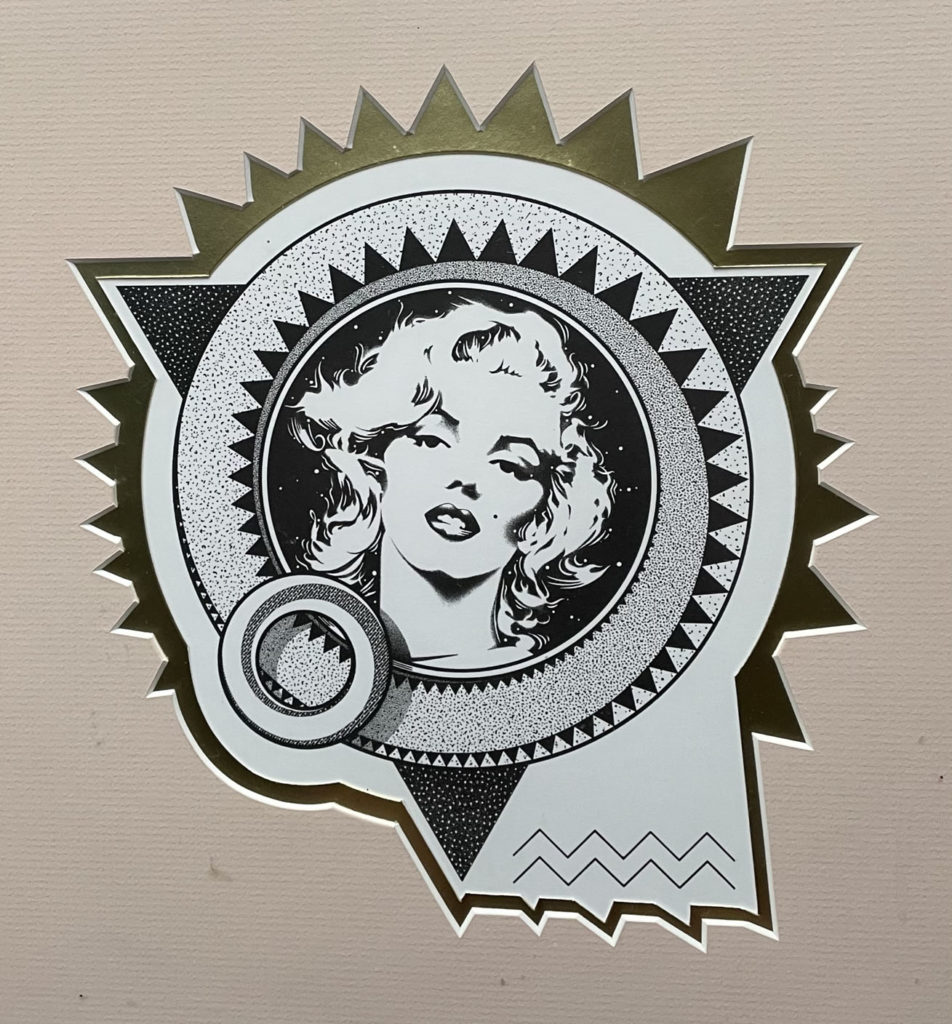
While Rankine says he thinks Eureka Springs “will always be a place that artists and people who love art will congregate,” he adds that he wishes “our city would make some long-term investments in its arts infrastructure.” And he’d especially like to see the rest of Northwest Arkansas take note.
“I would love the people at the Crystal Bridges Museum of American Art to come, have a beer or coffee and see this show,” he says. “These artists were the pioneers of the art scene in Northwest Arkansas. So Alice, if you are reading this, give me a call! I would love to help curate a similar exhibition in your exquisite museum.”
FAQ
‘Gone But Not Forgotten: Eureka Icons’
WHEN — Until Aug. 24
WHERE — Brews, 2 Pine St. in Eureka Springs
COST — Free
INFO — Email johnrankine69@gmail.com
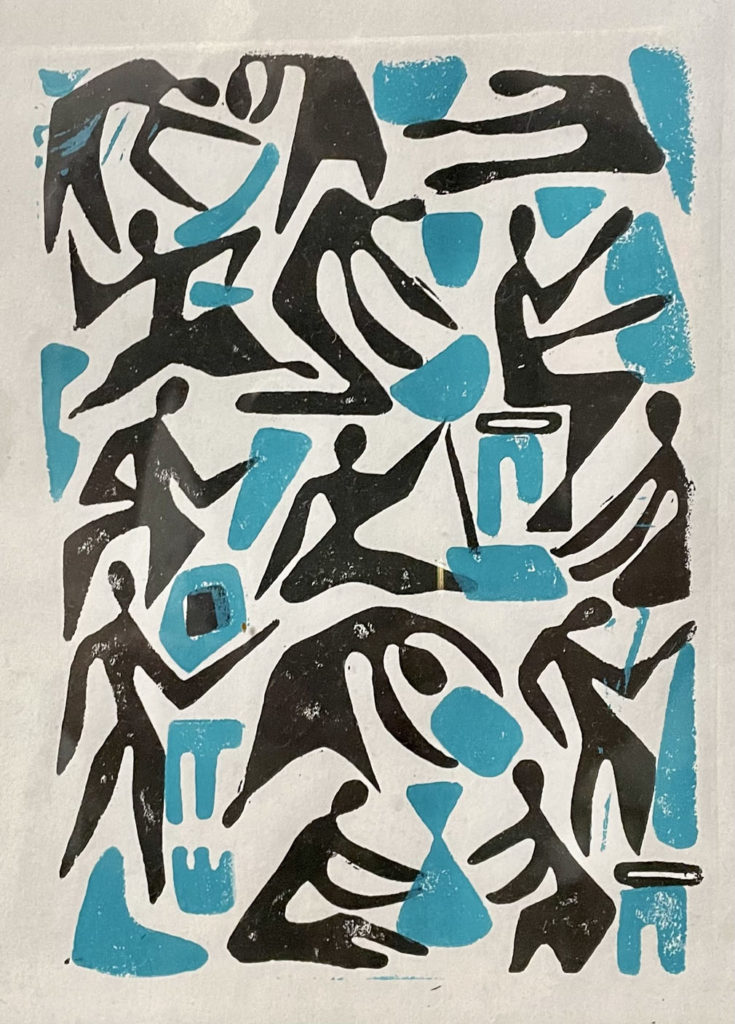
“Untitled,” block print by Elsa Freund, circa 1950s. “She was classic from every angle. Elsie’s tied-up hair and gorgeous cheekbones, coupled with a genteel manner, made for a formidable presence anytime and anywhere for decades. She even moved deliberately, as though each gesture was measured by grace. Kind and soft-spoken, her art was dynamite, be in watercolor or jewelry. Ever timeless and serene, her art is — and she was.” Freund died in 2001. 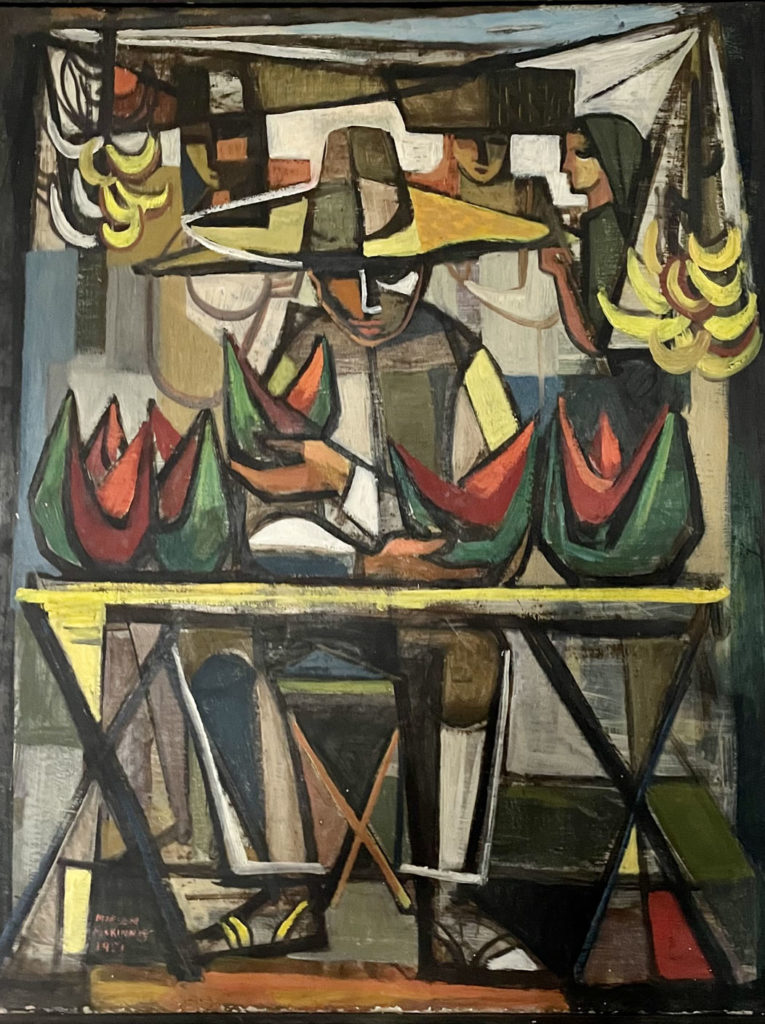
“The Mellon Seller,” oil on canvas by Miriam McKinnie, 1951. “A WPA mural artist who had studied in Minneapolis and Kansas City, Miriam’s early work exhibited the influence of Thomas Hart Benton’s Regionalism. Over the years her work evolved, becoming increasingly abstract with bright, vivid coloration. Her broad, round-faced women, surrounded by midcentury elements, became signature elements in many pieces.” McKinnie died in 1987. 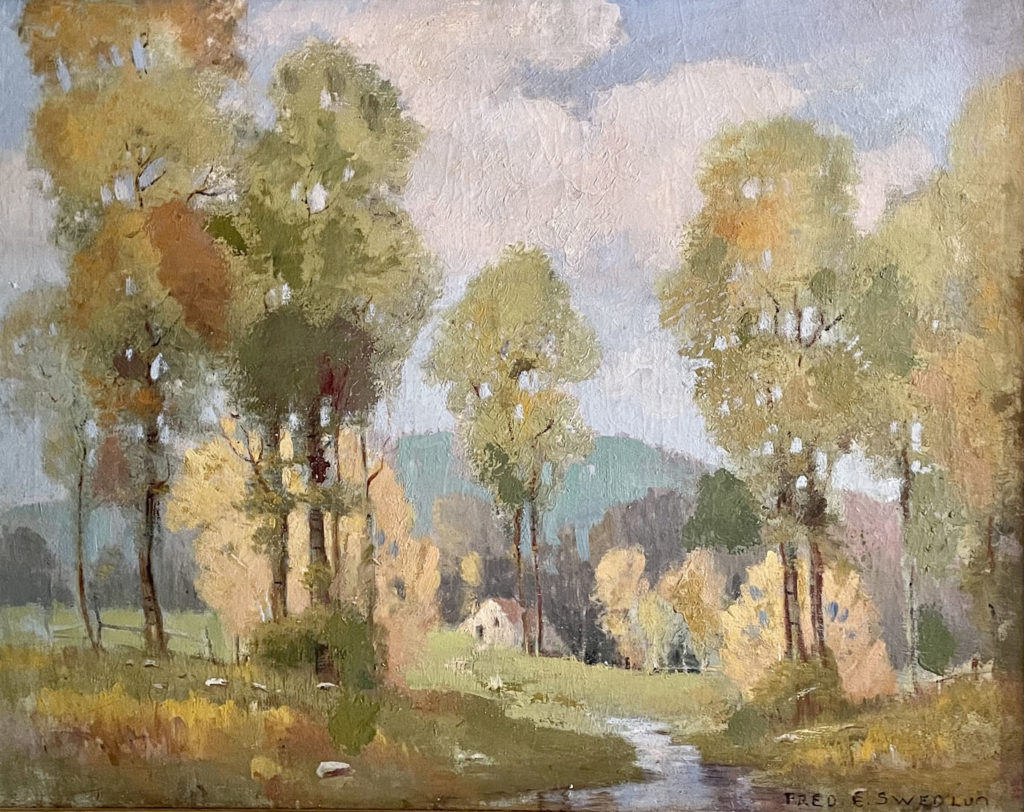
“Ozark Scene,” oil on canvas by Fred Swedlun, 1917. “Originally from Kansas, Fred studied and worked as an artist in Chicago. … Early in the 20th century he found Eureka Springs as a place for inspiration and to make a home. For many years he and his son, Glenn, taught art in Eureka and sold paintings at their gallery on Spring Street.” Swedlun died in 1959. 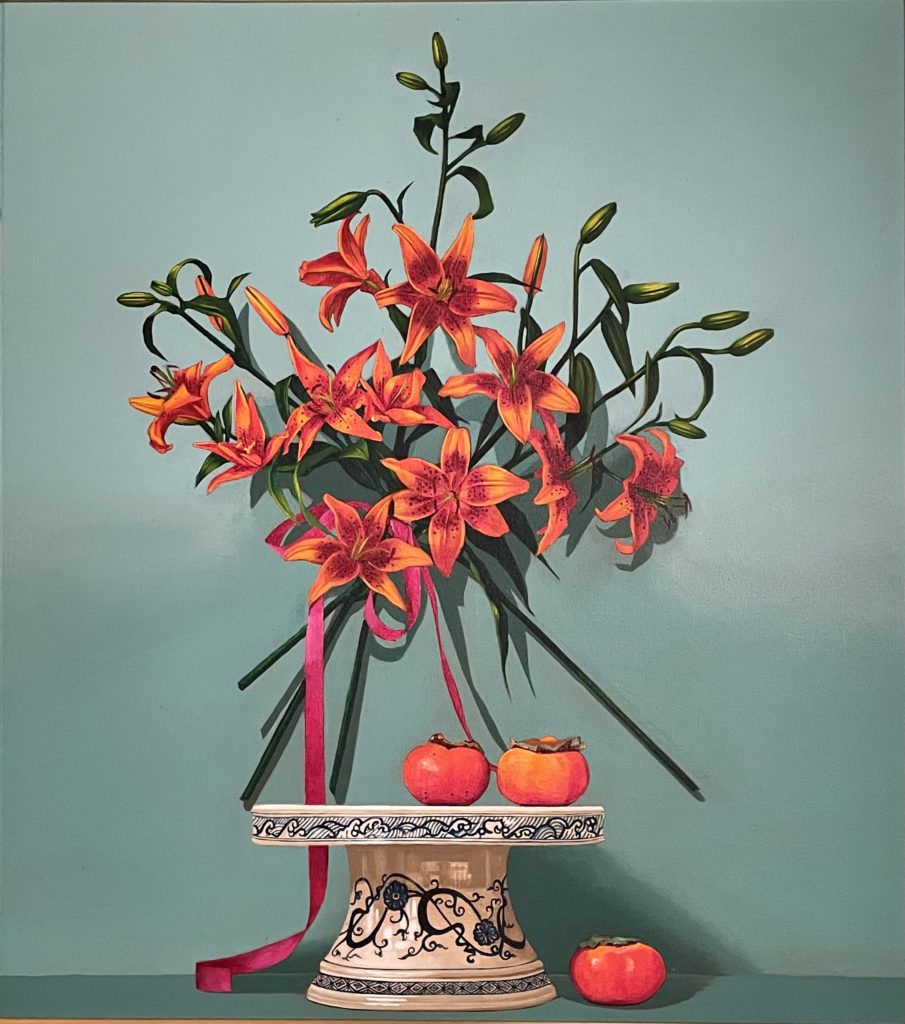
“Portrait Of Gary’s Cake Plate,” acrylic on canvas by Mary Sims, 1993. “She was not as big as a minute, but Mary’s personality and paintings were huge in beauty, technique and wit. Nationally revered, she painted daily with fierce dedication, achieving both greatness and whimsy. Her still life paintings combined disparate items in a bizarre but winning fashion. Her portraits brought muscles and poignancy together in surprising ways. As for style, she kept defining it.” Sims died in 2004.

